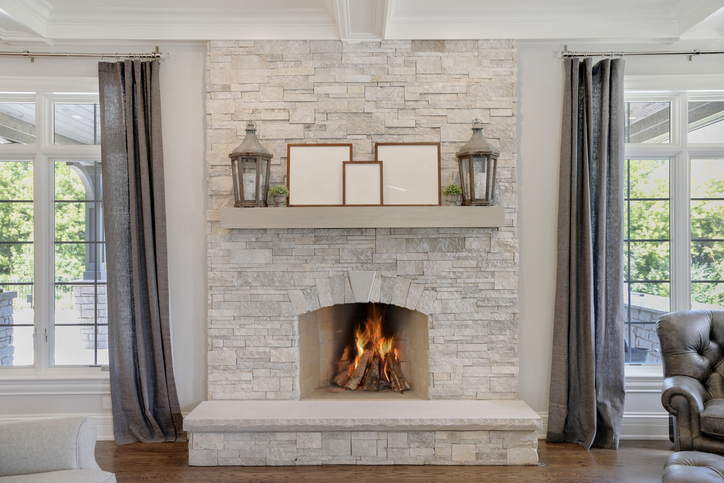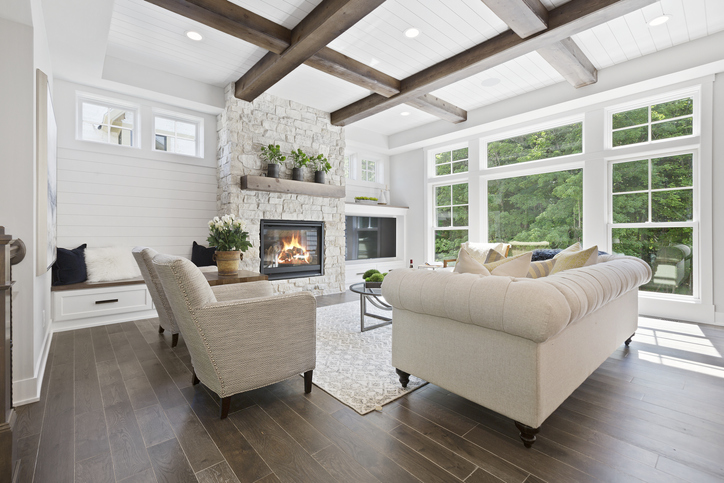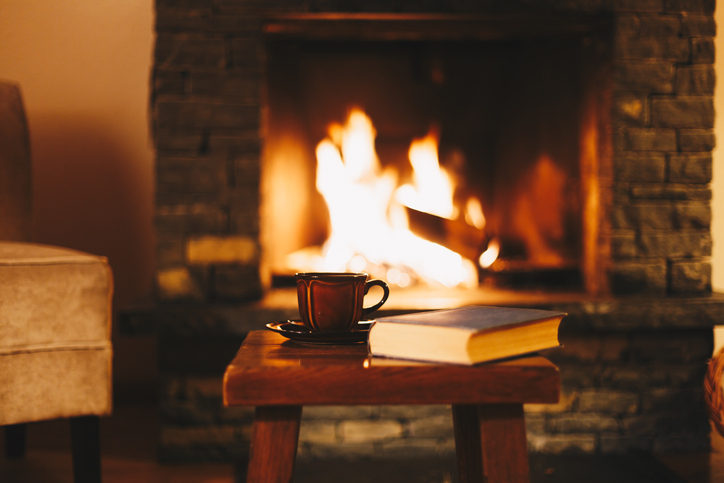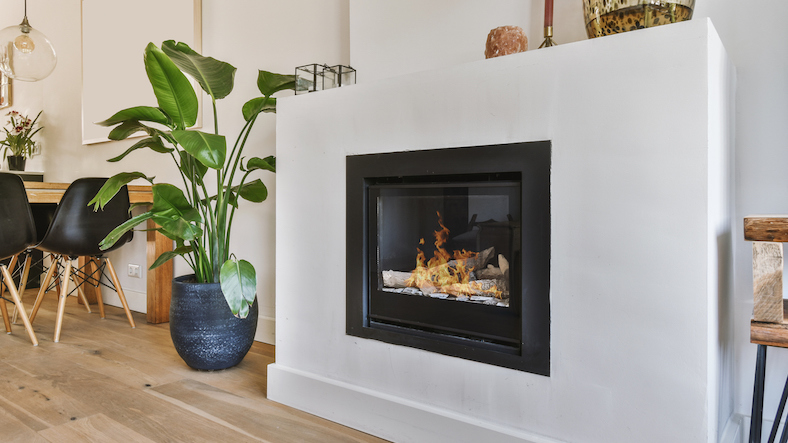Fireplaces are an excellent addition to any home, providing warmth and a cozy feel. However, building a fireplace is a task that requires careful planning and consideration.
This guide will help you build a safe and safe and efficient fireplacethat suits your needs and the style of your home. Read on to learn how to make a fireplace step by step.
What to consider before building a fireplace
Before you start building a fireplace, there are several factors to consider, such as the location of the fireplace, the size of the room, the different types of fireplaces that exist and even the legal requirements for their installation.
Where to put the fireplace?
The location of the chimney can affect its efficiency and safety. Ideally, the chimney should be located on an outside wall so that it can adequately vent flue gases. In addition, the chimney should not be located in an area where it can obstruct the flow of air into the room.
This is directly related to the size of the room. A room that is too large can make the fireplace inefficient in generating heat, while a room that is too small can make the fireplace too hot and dangerous.
If we talk about legal requirements, before building a fireplace, you should make sure that it complies with local legal and safety requirements. You can consult a professional for advice on the specific requirements in your area.
What type of fireplace to choose?

There are several types of fireplaces to choose from, such as open fireplaces, wood stoves and gas fireplaces. Each type has its own advantages and disadvantages, so it is important to consider the fuel to be used and energy efficiency before deciding which type of fireplace to install.
Some popular types of fireplaces include:
- Brick chimneys: brick chimneys are the most traditional and are built with bricks and mortar.
- Metal fireplaces: metal fireplaces are more modern and are made of stainless steel, aluminum or other materials.
- Prefabricated fireplaces: Prefabricated fireplaces are an easy and economical option, as they can be built off-site and then installed in the home.
- Wood or gas fireplaces: Wood or gas fireplaces are popular because they provide a natural heat source and are more efficient than electric fireplaces.
Designing the perfect fireplace
The perfect fireplace should be safe, efficient and attractive. Be sure to consider the size of the room and the proportions of the fireplace to ensure it fits the space perfectly. You should also choose high-quality, durable materials.
Designing the perfect fireplace can be a complex process that requires consideration of several factors. Some important considerations include its location and height, as well as its proportions.
What is the location and height of a chimney?

The fireplace should be located in the center of the room or on a wall where there is enough room to sit around it.
The height of the chimney should be proportional to the ceiling of the room and should have a minimum height of 4.5 meters from the base to the ceiling. The width of the chimney should be approximately one tenth of the width of the base of the house. The height to width ratio should be at least 1:7.
What proportions should a chimney have?
The proportions of the fireplace should be in harmony with the size of the room where it will be installed. The width of the chimney should be at least a quarter of the length of the room. The height of the hood should be at least one third of the height of the fireplace.
Materials to make a fireplace
The materials needed to build a fireplace are as follows:
- Refractory bricks or refractory concrete blocks.
- Refractory mortar.
- Stone or brick for the base.
- Steel plate for household door.
- Stainless steel flue pipes.
- Chimney cap.
- Masonry tools, such as trowels and chisels.
How to make a fireplace
Once you have the right materials, you can start building your fireplace. Follow the steps below:
- Mark the location of the chimney at the base of the house.
- Build a solid foundation for the fireplace using stone or brick.
- Start building the chimney using refractory bricks or refractory concrete blocks. Use refractory mortar to join the pieces together.
- Continue building the chimney until it reaches the proper height.
How to build a fireplace hearth

The fireplace hearth is the part where the fire is lit. Follow these steps to build your fireplace hearth:
- Determine the size of the home you want.
- Cut a steel plate to size for the fireplace door.
- Build a wall of refractory bricks or refractory concrete blocks around the home.
- Use refractory mortar to join the pieces.
How to build the lung and throat of a chimney
The lung and throat is the section above the fireplace hearth. Follow these steps to build the throat lung of your fireplace:
- Determine the size of lung and throat you need.
- Build a wall of refractory bricks or refractory concrete blocks around the lung and throat.
- Use refractory mortar to join the pieces.
How to build the chimney hood
The chimney bell is the part above the lung and throat. Follow these steps to build your chimney hood:
- Determine the size of the hood you need.
- Build a wall of refractory bricks or refractory concrete blocks around the hood.
- Use refractory mortar to join the pieces.
- Place a layer of insulation over the hood to reduce the amount of heat transferred to the roof structure.
How to build the flue
Theflue is the section above the hood that carries smoke and flue gases to the outside. Follow these steps to build your chimney flue:
- Determine the length and diameter of the flue you need.
- Use stainless steel pipe to construct the flue. Make sure the diameter is adequate for the size of the hood and the height of the chimney.
- Use stainless steel clamps to secure the flue to the hood and roof structure.
How to make the wreath and hat stand
The crown and cap are important components that protect the chimney from rain and snow. Follow these steps to make your chimney crown and chimney cap:
- Determine the size of the crown and cap you need.
- Use firebricks to build the crown around the top of the chimney. Make sure it has a proper slope to prevent water from pooling at the top.
- Use a chimney cap to cover the top of the wreath.
- Place a chimney cap over the chimney cap to protect it from rain and snow.
Safety measures for the construction and use of a chimney
When building and installing a chimney, it is essential to take safety measures to avoid accidents, ensure efficient operation and prolong its service life. Below, we explain the key aspects to consider.
Secure location and regulations
Before starting construction, verify that the location of the chimney complies with local regulations and make sure of the following:
- Safety distance: The fireplace should be away from flammable materials such as curtains, furniture or wooden structures. At least 1 meter of separation is recommended.
- Local regulations: Check the installation and smoke emission regulations in your area. In some places, a building permit is required.
- Flue height: The chimney should protrude at least 1 meter above the roof and be at least 3 meters above any nearby structure to avoid draft and smoke accumulation problems.
Fire resistant materials
The materials used must withstand high temperatures and avoid fire hazards:
- Refractory bricks and mortars: Ideal for the fireplace hearth and flue.
- Metal chimneys: If you use stainless steel, make sure it is double-walled to avoid overheating on the external surfaces.
- Heat-resistant paint: If you plan to paint any part of the fireplace, use specific products for high temperatures.
Flue installation
The flue is key to ensure proper smoke evacuation and avoid the accumulation of dangerous gases.
- Use stainless steel pipes: They are safer and more durable than other materials.
- Ensure adequate slope: The duct should have a minimum slope of 10% to prevent smoke stagnation.
- Avoid unnecessary bends: Do not use more than two 45° or 90° changes of direction, as they reduce draft and can cause soot build-up.
- Install a chimney cap: It protects the chimney from rain and improves smoke extraction.
Fire prevention
To reduce the risk of fire in the home, we recommend the following:
- Place a metal shield or screen on the front of the fireplace to prevent sparks or embers from flying outside.
- Use only dry and suitable firewood: Wet wood generates more soot and can clog the flue.
- Do not burn hazardous materials such as plastics, cardboard, treated wood or flammable waste.
- Ensure good ventilation in the room to avoid smoke accumulation.
Conclusion
Building a fireplace may seem like an overwhelming project, but by following the proper steps and using the right materials, anyone can build their own fireplace. Always remember to follow the proper proportions to ensure the safety and efficiency of the fireplace.
It is important to maintenance such as flue cleaning and periodic inspection is important. and keep in mind that building a chimney requires masonry skills and tools, so if you are not confident in your ability to do the project, it is best to hire a professional to do it.
Is it mandatory to comply with regulations to install a fireplace?
Yes, many areas require compliance with local regulations for safety, emissions and flue height. Before installing a chimney, consult a professional or your municipality.
What distance should there be between the chimney and flammable objects?
A minimum distance of 1 meter is recommended between the fireplace and furniture, curtains or flammable objects. In addition, it is advisable to use a metal screen to prevent embers from escaping to the outside.
How often should I clean the chimney?
A thorough cleaning is recommended at least once a year to remove soot and creosote, flammable substances that can cause fires. If you use the chimney frequently, check it more often.
What type of firewood is best for a fireplace?
Ideally, use dry, hard wood such as holm oak, oak or beech. Avoid burning wet, treated wood, cardboard or plastic, as they generate more soot and can release toxic gases.
How do I know if there are problems in the flue?
If you notice difficulty lighting the chimney, smoke inside the house or a bad smell, the flue could be clogged. In this case, have it cleaned or consult a professional to check the installation.


